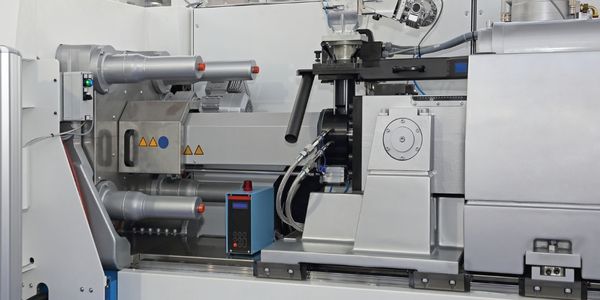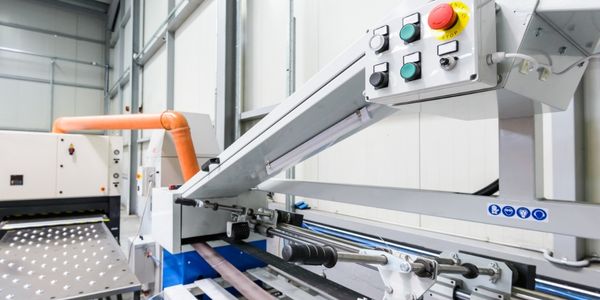Customer Company Size
Large Corporate
Country
- Germany
- Worldwide
Product
- Domo
Tech Stack
- Cloud Platform
- Data Connectors
Implementation Scale
- Enterprise-wide Deployment
Impact Metrics
- Productivity Improvements
- Digital Expertise
Technology Category
- Platform as a Service (PaaS) - Data Management Platforms
Applicable Functions
- Discrete Manufacturing
- Sales & Marketing
Use Cases
- Manufacturing System Automation
- Inventory Management
Services
- Data Science Services
- Cloud Planning, Design & Implementation Services
About The Customer
Steuler Group is a manufacturing company with a network of over 25 subsidiaries around the world. The company has more than 2,800 employees and generates a revenue of $447 million. Steuler Group operates in a fast-paced environment where the ability to pivot processes, products, and operations is vital. The company's IT department was tasked with programming a system that could only be accessed by a few, and there was no single point of truth for data across the organization.
The Challenge
Steuler Group, a manufacturing company with over 25 subsidiaries worldwide, faced a significant challenge in consolidating data from different sources and systems. This lack of a unified data source slowed down decision-making processes and hindered the company's ability to pivot processes, products, and operations effectively. The company's IT department was burdened with programming a system that could only be accessed by a few, and there was no single point of truth for data across the organization.
The Solution
Steuler Group implemented Domo, a cloud platform that allowed the company to combine its data from across its business units into curated dashboards. This gave the company greater agility and real-time insights into the organization’s health. Domo’s abundance of data connectors was a key differentiator for Steuler, as it allowed data from across business units and departments to be consolidated. The speed at which Steuler was able to connect the data and create the first dashboard made Domo the obvious choice. With Domo, Steuler now has a single source of truth for its data, accessible to everyone from subsidiary managers to the CEO.
Operational Impact
Quantitative Benefit

Case Study missing?
Start adding your own!
Register with your work email and create a new case study profile for your business.
Related Case Studies.

Case Study
Plastic Spoons Case study: Injection Moulding
In order to meet customer expectations by supplying a wide variety of packaging units, from 36 to 1000 spoons per package, a new production and packaging line needed to be built. DeSter wanted to achieve higher production capacity, lower cycle time and a high degree of operator friendliness with this new production line.

Case Study
Robot Saves Money and Time for US Custom Molding Company
Injection Technology (Itech) is a custom molder for a variety of clients that require precision plastic parts for such products as electric meter covers, dental appliance cases and spools. With 95 employees operating 23 molding machines in a 30,000 square foot plant, Itech wanted to reduce man hours and increase efficiency.

Case Study
Hospital Inventory Management
The hospital supply chain team is responsible for ensuring that the right medical supplies are readily available to clinicians when and where needed, and to do so in the most efficient manner possible. However, many of the systems and processes in use at the cancer center for supply chain management were not best suited to support these goals. Barcoding technology, a commonly used method for inventory management of medical supplies, is labor intensive, time consuming, does not provide real-time visibility into inventory levels and can be prone to error. Consequently, the lack of accurate and real-time visibility into inventory levels across multiple supply rooms in multiple hospital facilities creates additional inefficiency in the system causing over-ordering, hoarding, and wasted supplies. Other sources of waste and cost were also identified as candidates for improvement. Existing systems and processes did not provide adequate security for high-cost inventory within the hospital, which was another driver of cost. A lack of visibility into expiration dates for supplies resulted in supplies being wasted due to past expiry dates. Storage of supplies was also a key consideration given the location of the cancer center’s facilities in a dense urban setting, where space is always at a premium. In order to address the challenges outlined above, the hospital sought a solution that would provide real-time inventory information with high levels of accuracy, reduce the level of manual effort required and enable data driven decision making to ensure that the right supplies were readily available to clinicians in the right location at the right time.

Case Study
Fully Automated Visual Inspection System
Tofflon has developed a fully automatic machine that uses light to inspect vials, medicine bottles, or infusion containers for glass fragments, aluminum particles, rubber grains, hairs, fibers, or other contaminants. It also detects damaged containers with cracks or inclusions (microscopic imperfections), automatically removing faulty or contaminated products. In order to cover all production processes for freeze-dried pharmaceuticals, Tofflon needed to create an open, consistent, and module-based automation concept.

Case Study
SAP Leonardo Enabling Rocket Science
At times, ULA has as many as 15 different operating systems dedicated to overlapping processes, such as rocket design, testing, and launch. Multiple systems created unnecessary costs and unwanted confusion among workers at offices, factories, and launch sites in different location. In order to improve collaboration and transparency during vital activities that directly influence mission success, ULA wanted to improve data sharing and streamline manufacturing processes.








